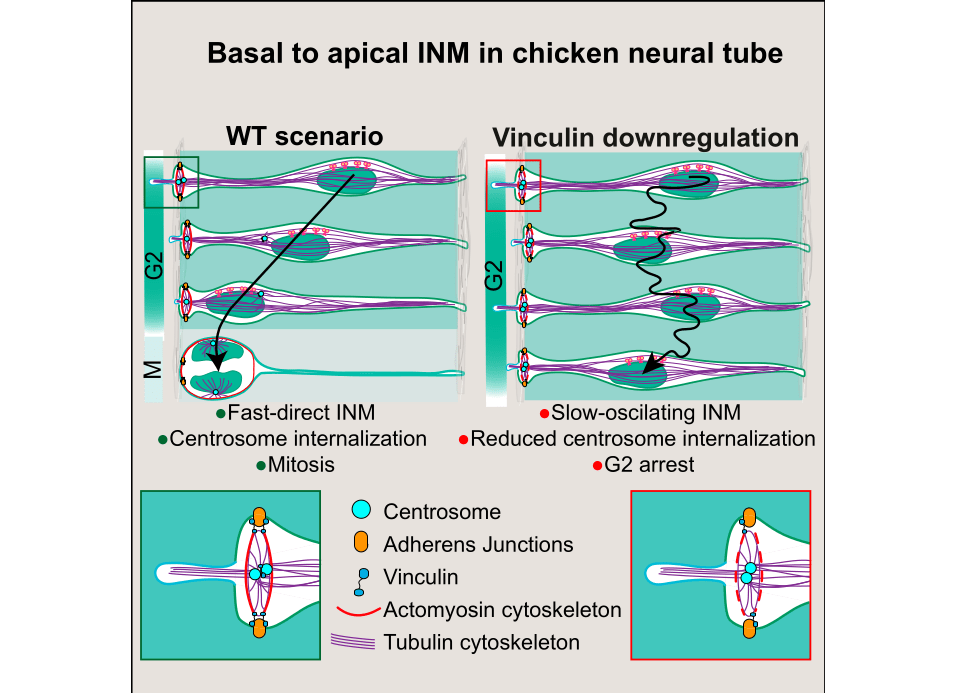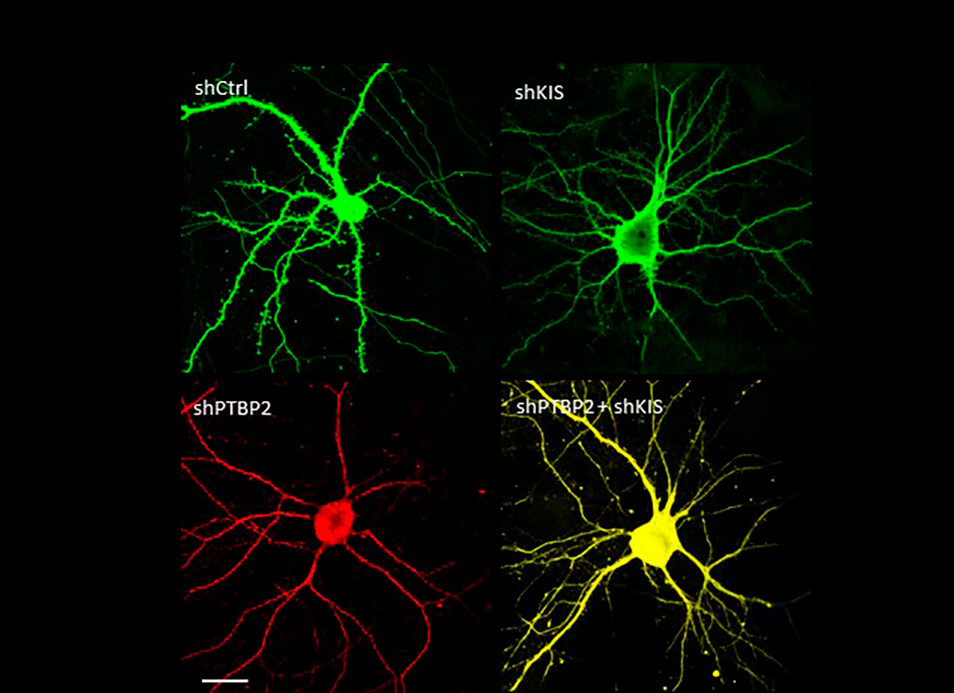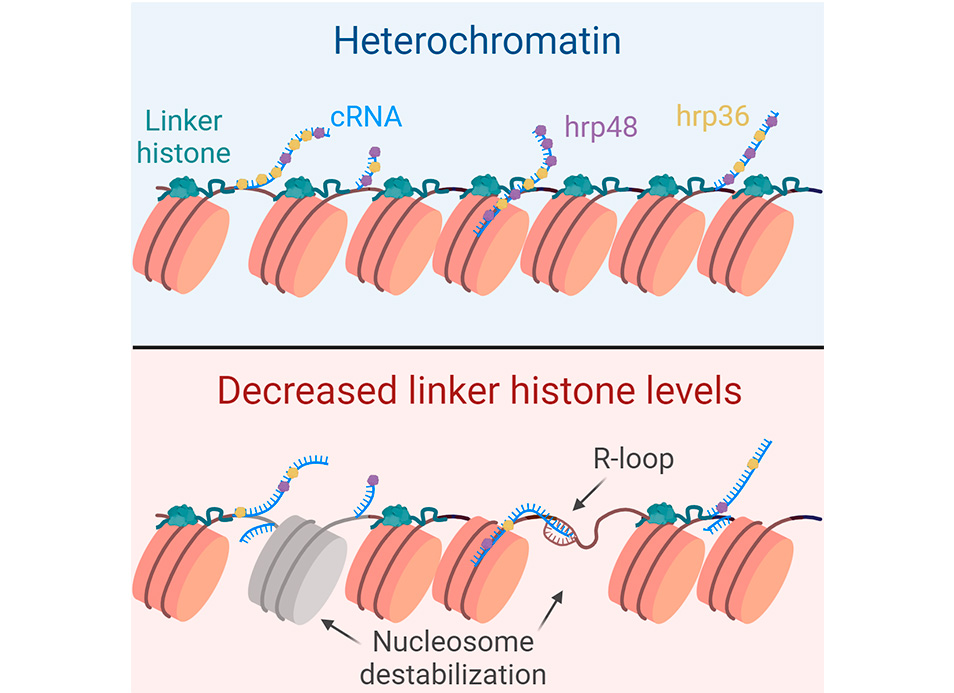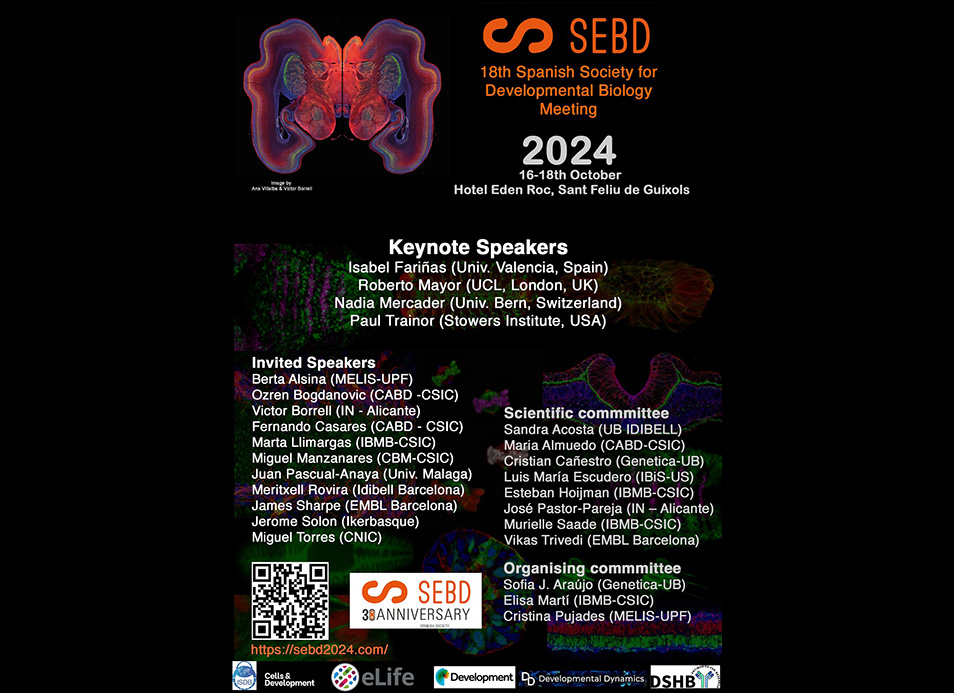This study provides important new insights into the regulation of alternative splicing in neurons by…
Sebastian Pons’s lab show that vinculin, an actin-binding protein, strengthens the apical pole of embryonic stem cells in the neural tube so that they can perform vital tasks for their cell cycle, such as interkinetic nuclear migration or centrosome internalization.
Abstract
Vinculin is an actin-binding protein (ABP) that strengthens the connection between the actin cytoskeleton and adhesion complexes. It binds to β-catenin/N-cadherin complexes in apical adherens junctions (AJs) that maintain cell-to-cell adhesions, and to talin/integrins in the focal adhesions (FAs) that attach cells to the basal membrane. Here, we demonstrate that β-catenin targets vinculin to the apical AJs and the centrosome in the embryonic neural tube (NT). Suppression of vinculin slows down the basal-to-apical part of interkinetic nuclear migration (BAINM), arrests neural stem cells (NSCs) in the G2 phase of the cell cycle, and ultimately dismantles the apical actin cytoskeleton. In the NSCs, mitosis initiates when an internalized centrosome gathers with the nucleus during BAINM. Notably, our results show that the first centrosome to be internalized is the daughter centrosome, where β-catenin and vinculin accumulate, and that vinculin suppression prevents centrosome internalization. Thus, we propose that vinculin links AJs, the centrosome, and the actin cytoskeleton where acto-myosin contraction forces are required.
Reference:
Ochoa A, Herrera A, Menendez A, Estefanell M, Ramos C, Pons S. Vinculin is required for interkinetic nuclear migration (INM) and cell cycle progression. J Cell Biol. 2024 Jan 1;223(1):e202106169. doi: 10.1083/jcb.202106169. Epub 2023 Oct 27. PMID: 37889294; PMCID: PMC10609122.




